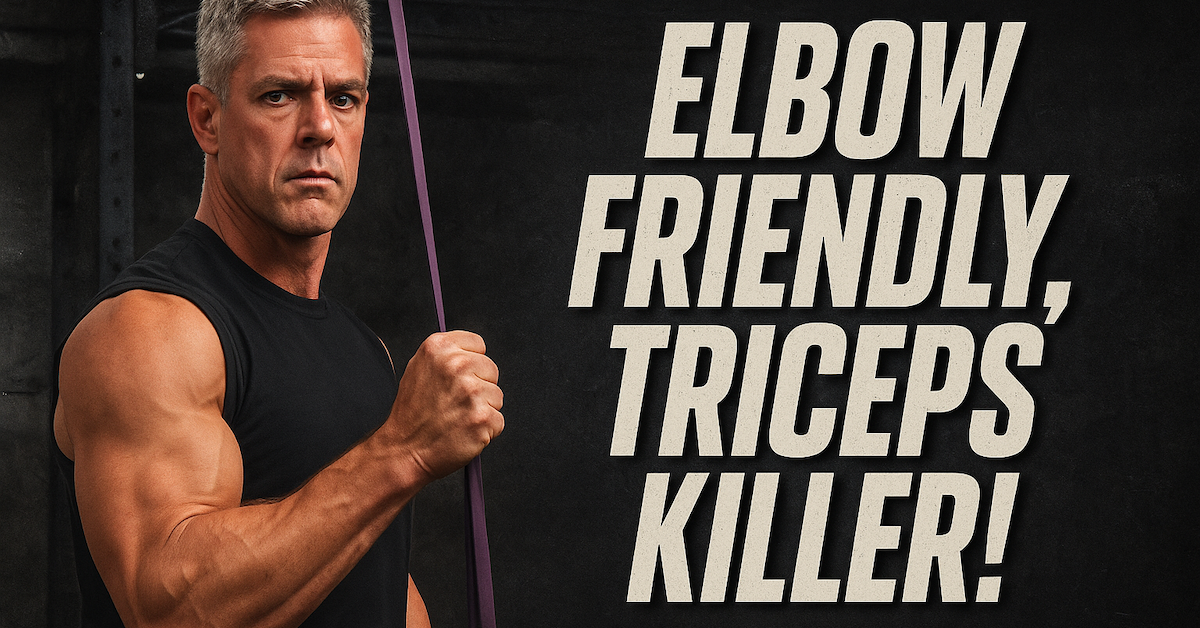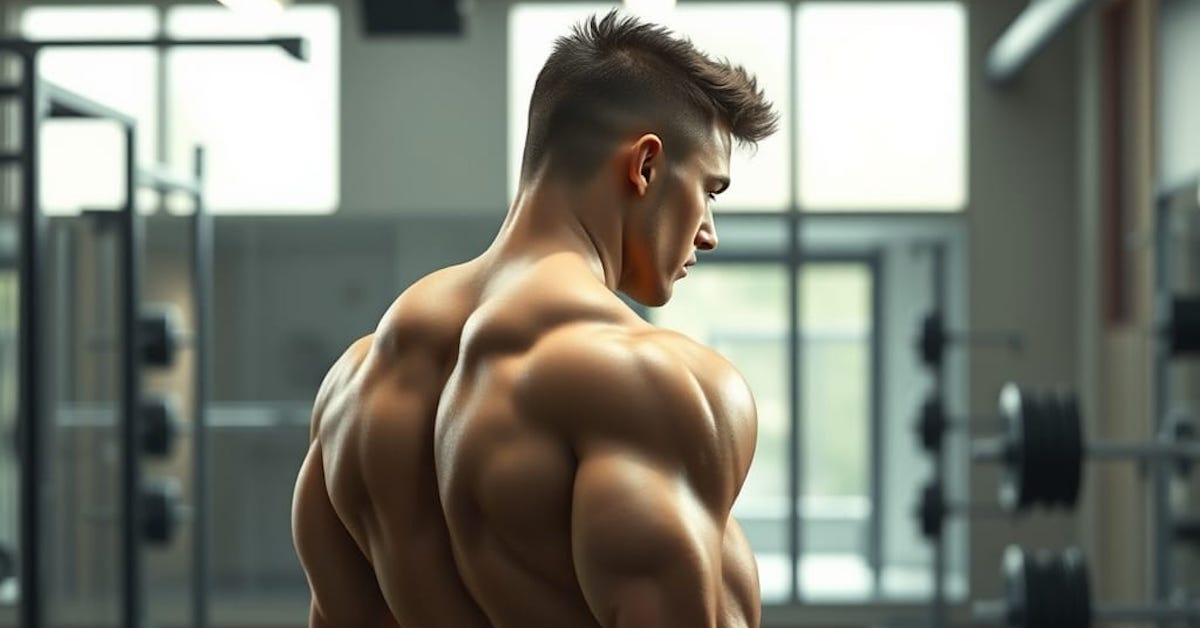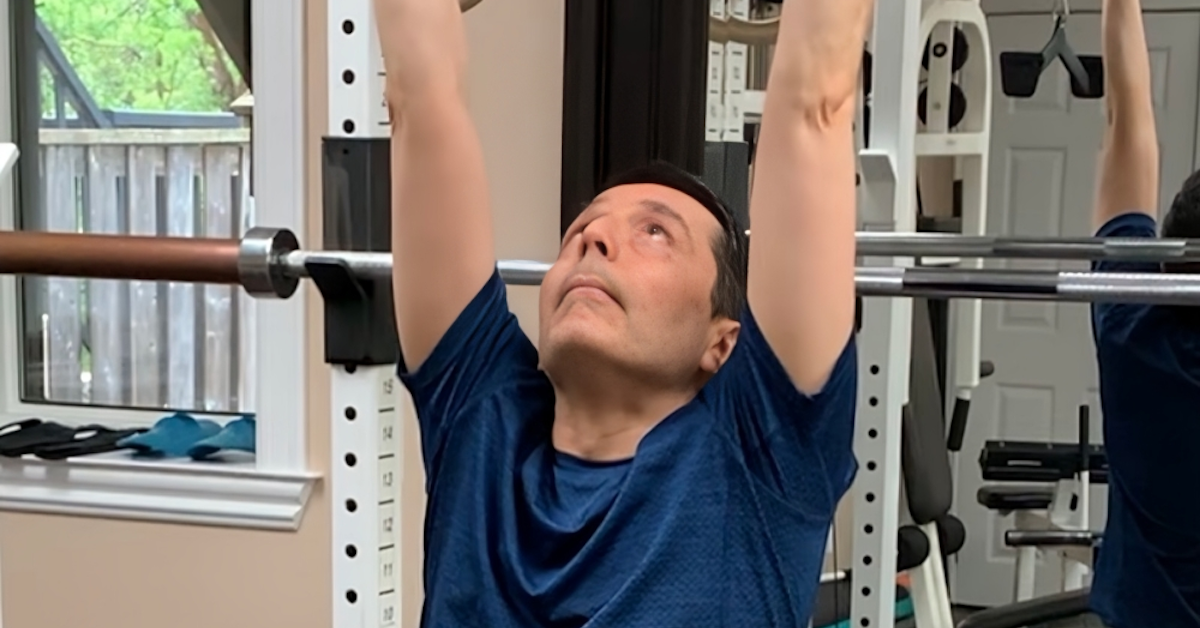For years we’ve been told to avoid behind-the-neck pulldowns and pull-ups. And for good reason — they place a tremendous amount of stress on the shoulders when you’re lifting a heavy load with the humeri abducted and in a position of maximum external rotation. It’s a problem waiting to happen.
Besides, it’s not a natural movement. We’re not really meant to pull things behind our head like that, nor do we ever have to in daily life. Even in the animal world, you don’t see monkeys pulling themselves up behind their head — they know it’s not natural!
At least with a behind-the-neck press, there’s a chance you might perform a similar movement in real life. Maybe you need to hoist a log, yoke, wood or steel beam, or even an animal across your shoulders and then press it overhead. It’s rare, but it can happen.
From a biomechanics and safety standpoint, the head of the humerus isn’t jammed against the acromion during a press like it is during a pull from behind the head — which can lead to shoulder impingement syndrome. So assuming you have the necessary range of motion and it doesn’t cause discomfort, the occasional behind-the-neck press may be a suitable option.
But What About Chin-Ups?
Now, let’s turn our attention to chin-ups.
Before we go any further, let me clarify the difference between a chin-up and a pull-up:
- A chin-up is performed with a supinated, neutral, or mixed grip.
- A pull-up is performed exclusively with a pronated grip.
Let’s focus on the supinated-grip chin-up. Is it a natural movement?
Think about it… How often do you press a barbell overhead with a supinated grip? Maybe you’ve done an overhead dumbbell press where you start with a supinated grip at the bottom and rotate to a pronated grip at the top — commonly referred to as an Arnold press. Or perhaps you’ve performed a reverse-grip bench press lying on your back.
But I’d venture to say that in all your years of lifting, you’ve never pressed a bar overhead with a supinated grip.
If I asked you to raise your arms straight up overhead right now, your palms would naturally face either forward or toward each other — not backward! And if I were to review your training logs from the past five years (and I know every serious trainee keeps a log), I’d probably see all kinds of overhead presses using various implements and grip widths — but the grip orientation would always be either pronated or neutral.
So Why Do We Perform Supinated-Grip Chin-Ups?
The obvious answer is to build muscle.
Chin-ups and pulldowns performed with a supinated grip are excellent for building the biceps, delts, and lats — not to mention the demand they place on the core. But at what cost? Are we compromising the health of our elbows or shoulders by doing them this way?
Would it be smarter to reserve supinated grips for movements that feel more natural in that position — like rows and curls — and stick to pronated or neutral grips for vertical pulling exercises like chin-ups and pulldowns?
After all, a reverse-grip row pairs well with a reverse-grip bench press, and any supinated arm curl can be complemented with a reverse-grip pressdown. But there’s no true antagonistic movement for a supinated-grip chin-up. That alone should raise a red flag. Over time, if you perform enough of them, a muscle imbalance is almost inevitable!
Why Is A Pronated Grip More Natural for Pull-Ups?
Here’s something else to consider…
Reverse-grip pulldowns are done with a supinated grip. Reverse-grip curls are done with a pronated grip. Why?
Because they’re both reverse grips — the opposite of what’s natural.
Think about it — you don’t call a standard curl a “supinated-grip curl.” It’s just a curl. And you don’t call a regular pulldown a “pronated-grip pulldown.” It’s just a pulldown.
We only specify a “reverse” grip when the hand position deviates from what we typically use or what feels instinctive.
That alone should tell you that pulling with a pronated or neutral grip is more in line with the body’s natural mechanics — just like curling with a supinated grip is.
So What’s the Takeaway?
Am I saying you should never perform supinated-grip chin-ups or pulldowns? No, not at all. They’re useful tools for building muscle — especially in the biceps and lats — and for adding variety to your training.
But they should be used sparingly and strategically — not as a staple movement done every week for years on end.
If you’re constantly battling nagging elbow or shoulder issues, your grip selection on pulling movements might be part of the problem.
Whenever possible, stick to neutral or pronated grips for overhead pulling exercises like chin-ups and pulldowns. Reserve the supinated grip for exercises where it feels most natural, like curls and certain rows.
At the end of the day, smart training is about balancing results with joint health and longevity.
Just because you can do a certain exercise doesn’t always mean you should — at least not all the time.
Listen to your body. Train hard. But train smart.

Standing Band Pressdowns: The Joint-Friendly Triceps Builder
If you want bigger, stronger arms but struggle with elbow pain or can’t seem to get the right triceps activation

Target Your Rear Delts Like Never Before
If you’ve struggled to feel your rear delts working—or to fill in that rear delt gap—this variation of the bent-over

Leo’s Chin-Up Journey (Day 1): From Zero to Hero
Can’t Do a Chin-Up? Neither Could Leo… But That’s About to Change. Leo started training with me back in September.
follow
Error: No feed with the ID 2 found.
Please go to the Instagram Feed settings page to create a feed.
